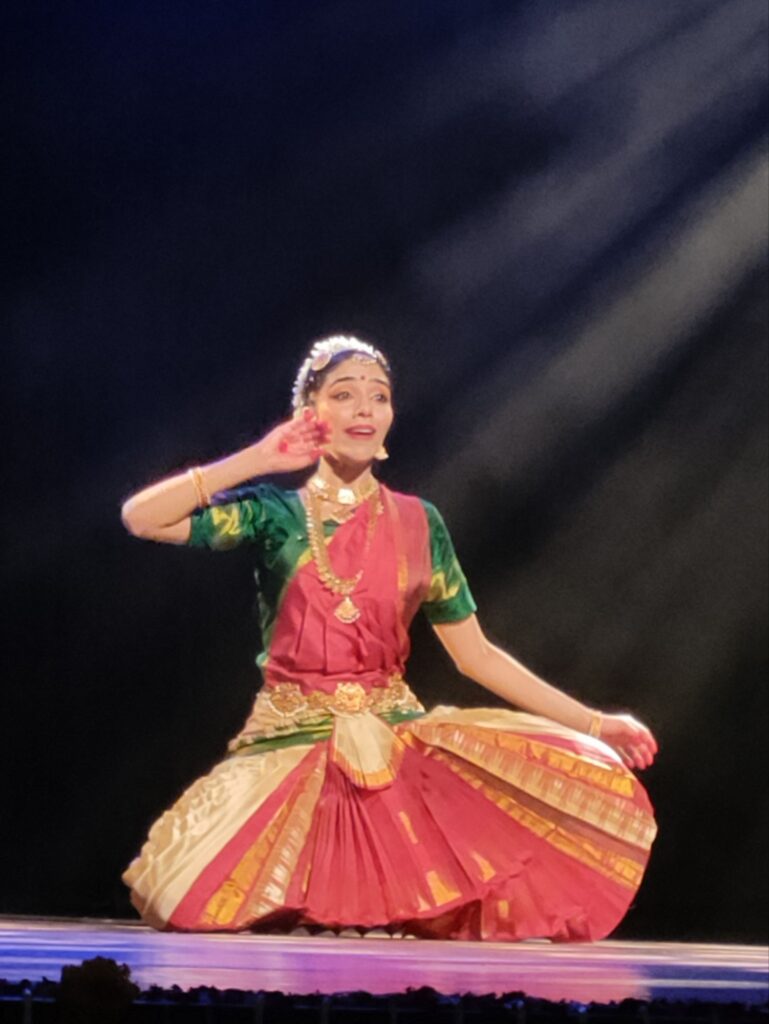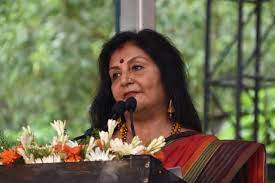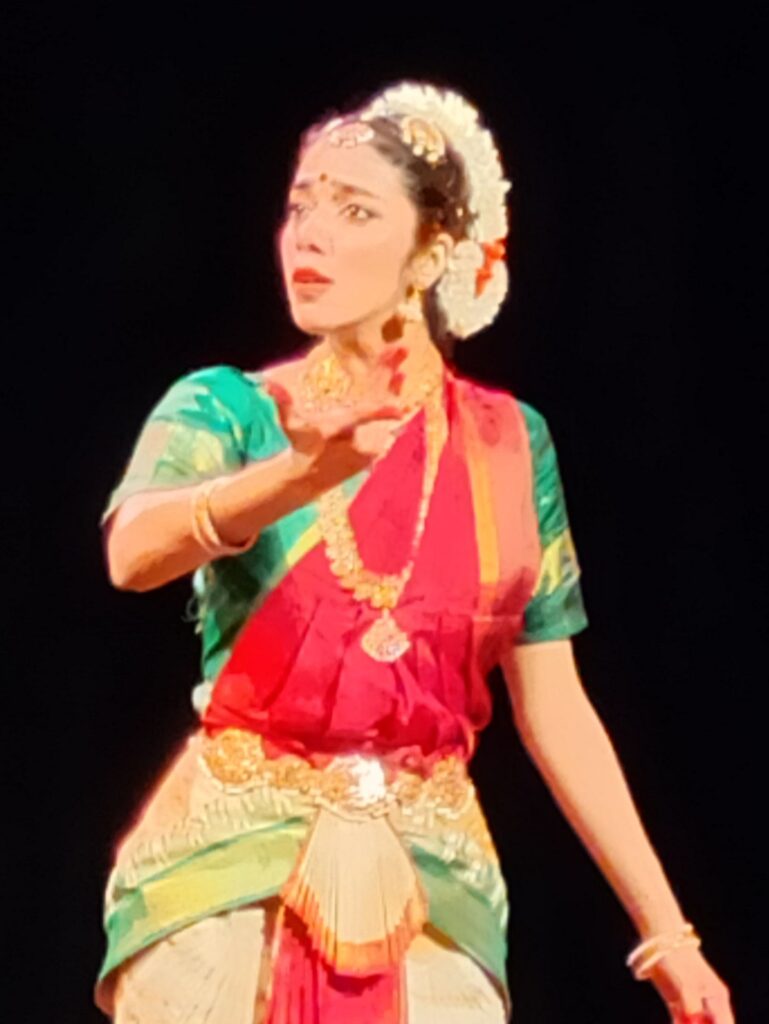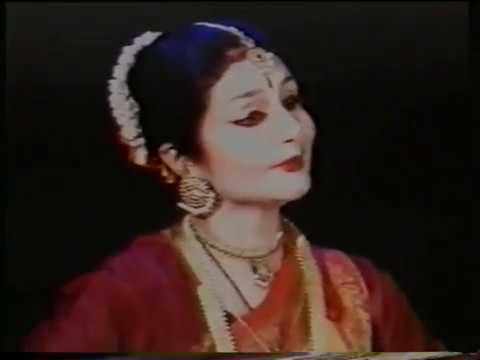Shiva-Shakti: Divine love and power personified on stage

Ria Gupta delivering the Bharatanatyam recital titled ‘Shiva-Shakti’.
Shiva, in Hindu philosophy, the dynamic interaction between the feminine and male energy in the cosmos is symbolized by the profound idea of Shakti. It represents the coming together of Shakti, the divine feminine energy that animates the entire creation, and Shiva, the cosmic awareness. The manifestation, maintenance, and disintegration of the universe depend on this union. Shiva Shakti encompasses a multitude of Shakti aspects or expressions, each with distinct attributes. The divine couple Shiva-Shakti, viewed from a metaphysical perspective, represents two fundamental aspects of the One: the feminine principle, which stands for Its Energy, the Force that acts in the manifested world and life itself, and the masculine principle, which represents the enduring aspect of God. Here is where Shakti is.
It was a personification of divine power on stage as Ria Gupta, disciple of Guru Smt Sindhu Mishra, presented a Bharatanatyam recital titled ‘Shiva-Shakti – The Cosmic Union’.

Guru Sindhu Mishra explaining the concepts of the Dance
The recital, organised by the cultural society Aayam at Delhi’s LTG Auditorium, mesmerised the audience with its harmonious blend of tradition and innovation, technique and artistry.
Ria presented a compelling exploration of Shiva and Parvati, the cosmic pair representing the opposing forces of destruction and creation that form the eternal cycle of the universe. Equally compelling were the creative choreography, unusual choice of poetic texts, and juxtaposition of Carnatic and Hindustani styles of music.
Conceived and choreographed by Guru Smt Sindhu Mishra, the presentation described aspects of Shiva and Parvati through little known verses from the Ramcharitmanas. Ria’s talent and training were on full display as she portrayed the contrasting deities with layered precision and emotion.
In her first solo recital, Ria proved herself as an accomplished Bharatanatyam dancer. Her passion and dedication were evident as she created an ambience of divine love and power through her nuanced abhinaya and intricate jatis.
The evening unfolded with a Ganesh Kriti, ‘Ananda Narthana Ganapatim Bhaavaye’. Marked by vivacity and depth, the piece described the divine bliss emanating from Ganesha’s dance, which accompanies the captivating music of the gandharvas playing the lute, mridangam and veena. The choreography was an energetic blend of rhythmic and expressive movements, executed with ease by Ria.
Growing up, Parvati—the daughter of Himavan and Mainavati—heard stories about Lord Shiva. In addition to her curiosity about who this Shiva was, Parvati also harbored dreams of marrying him as she had begun to adore him. According to folk lore Parvati did penance for thousands of years to please Lord Shiva and woo him. Finally the Lord was pleased and married Devi Parvati!
This aspect of the epic tale was enumerated by a Pada Varnam, created especially for this presentation. The poetry, from Baal Kand of Tulsidas’ Ramcharitmanas, describes the episode where Parvati is encouraged by Narad Muni to undergo penance in the forest to prove her love to Shiva and become his consort. Seeing this, Shiva sends the Saptarishi to test Parvati’s devotion. Ria explored the narrative with intense expressions and sophisticated rhythmic patterns. Set to Ragam Shahana and Talam Adi, the composition was composed and sung by Shri Nitin Sharma.
The following piece was a Keerthanam — the well known ‘Natanam Adinar’. In a vibrant rendition, Ria portrayed the joyful dance of Lord Shiva in the golden halls of Chidambaram, which was so powerful that all eight directions trembled, the head of Adishesha swayed, and drops of Ganga’s water scattered all around from his matted hair. Set to Ragam Vasantha, the Shri Gopalakrishna Bharatiyar composition was sung by Shri G Elangovan.
The Padam was another unusual excerpt from Ramcharitmanas. In this, Ria explored an episode from Shiva and Parvati’s wedding celebrations, where the people of Himachal, upon seeing Shiva’s wedding procession, were shocked to see a terrifying band of ghosts, demons, spirits. Maena, the mother, attempted to convince Parvati into abandoning the wedding, to the extent that she was ready to give up her life for it!
The tale of Parvati imparts to us the significance of metamorphosis. She endured great penance in order to gain Lord Shiva’s favor because of her undying devotion and love. Her path of introspection and personal development highlights the capacity for transformation that exists in all of us. It motivates us to welcome change

Ria Gupta
The evening concluded with a scintillating Hindolam Thillana, composed by Shri Dandayudhapani Pillai and sung by Shri G Elangovan. The charanam was an invocation to Shiva, the lord of dance, the one whose auspicious feet are cherished by his devotees. It was a fitting end to a powerful performance, which elevated the audience with its richness and depth.
The distinguished orchestra included Shri G Elangovan on Carnatic vocals and flute, Shri Nitin Sharma on Hindustani vocals, Shri Sachin Sharma on the tabla and Dr Ramamurthy Kesavan on the mridangam. Nattuvangam was by Guru Smt Sindhu Mishra.
Ria’s mastery of Bharatanatyam techniques as well as nuanced understanding of literature were evident throughout her performance. In her first solo stage appearance, she succeeded in making an impact, with her dedication and dynamism apparent. She presents yet another young artiste flowering under the tutelage of Guru Smt. Mishra.

File Photo of Guru Sindhu Mishra as a young Bharatnatyam Danseuse
Guru Smt Mishra distinguished herself as a performer in the classical milieu under the guidance of eminent Gurus Shri KN Dakshinamoorthy, Shri KJ Govindarajan and Smt Kamalini Dutt. She emerged as a choreographer with a unique and compelling style, and played a vital role in conceiving, organizing and choreographing high-profile events and festivals across the country. The recipient of awards and fellowships from the central and state governments, she is also the founder of the cultural society Aayam.